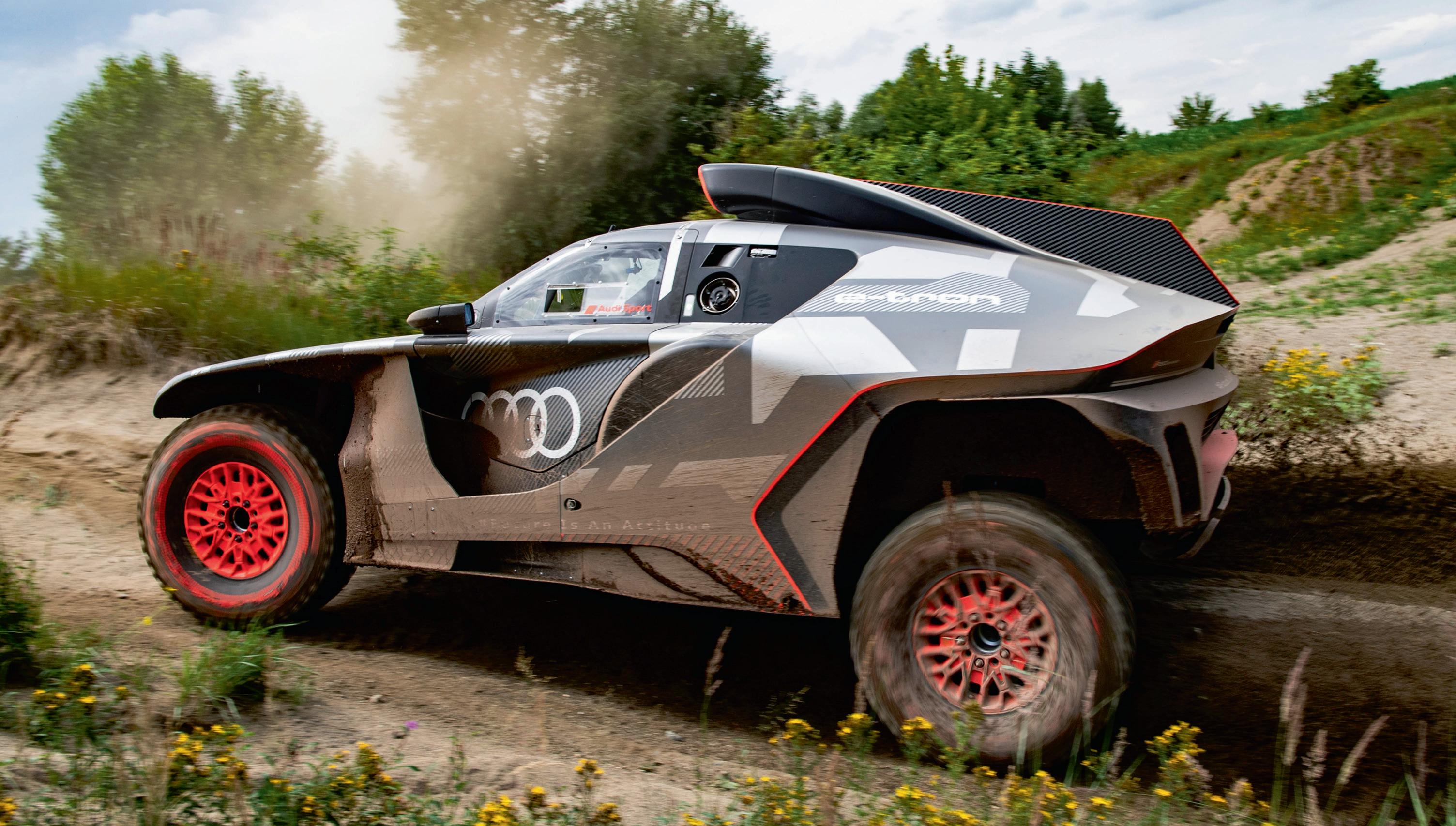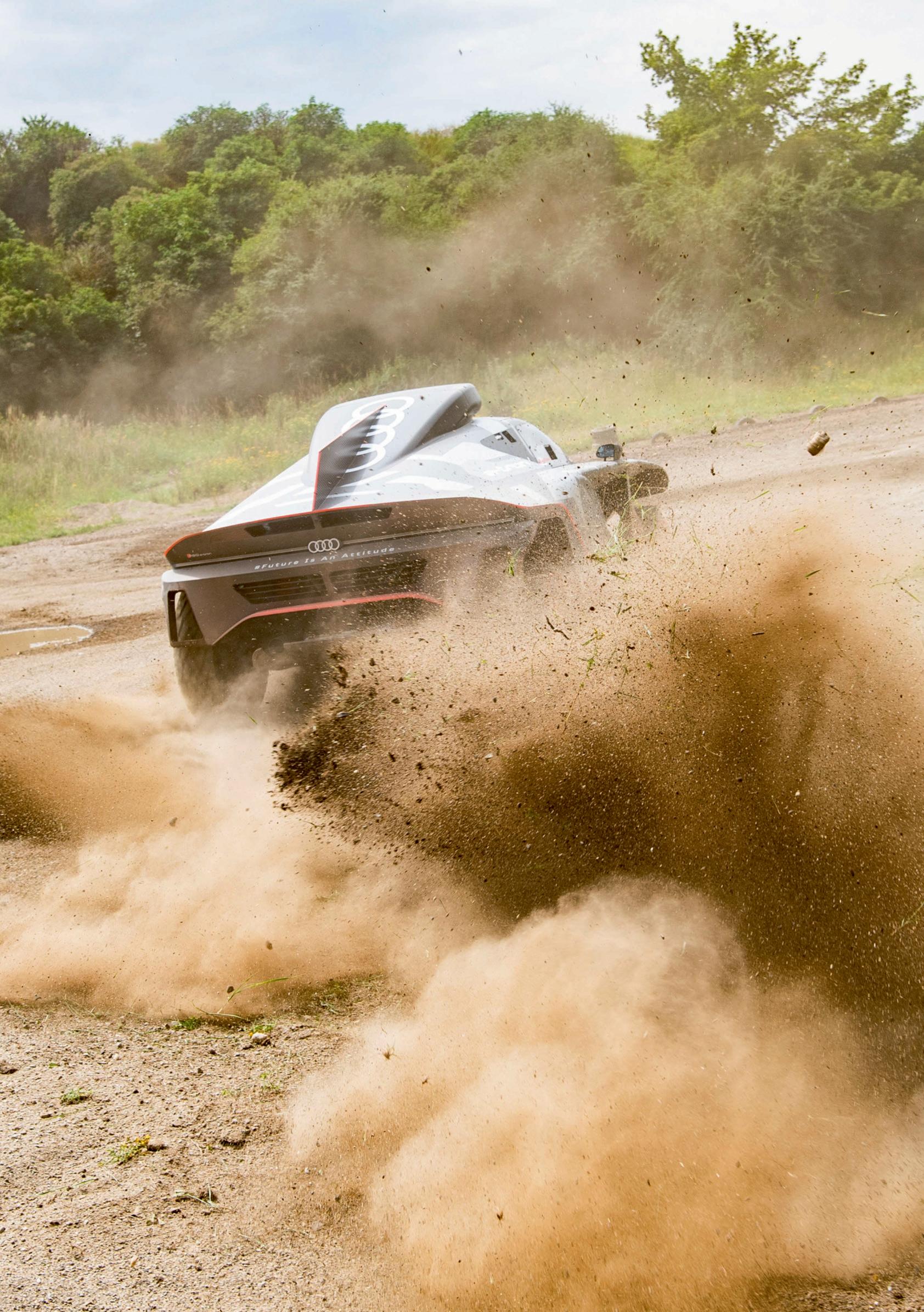
7 minute read
Electro-Dakar Audi RS Q e-tron aims to revolutionise desert racing
Words: Tom Alderney Pictures: Audi
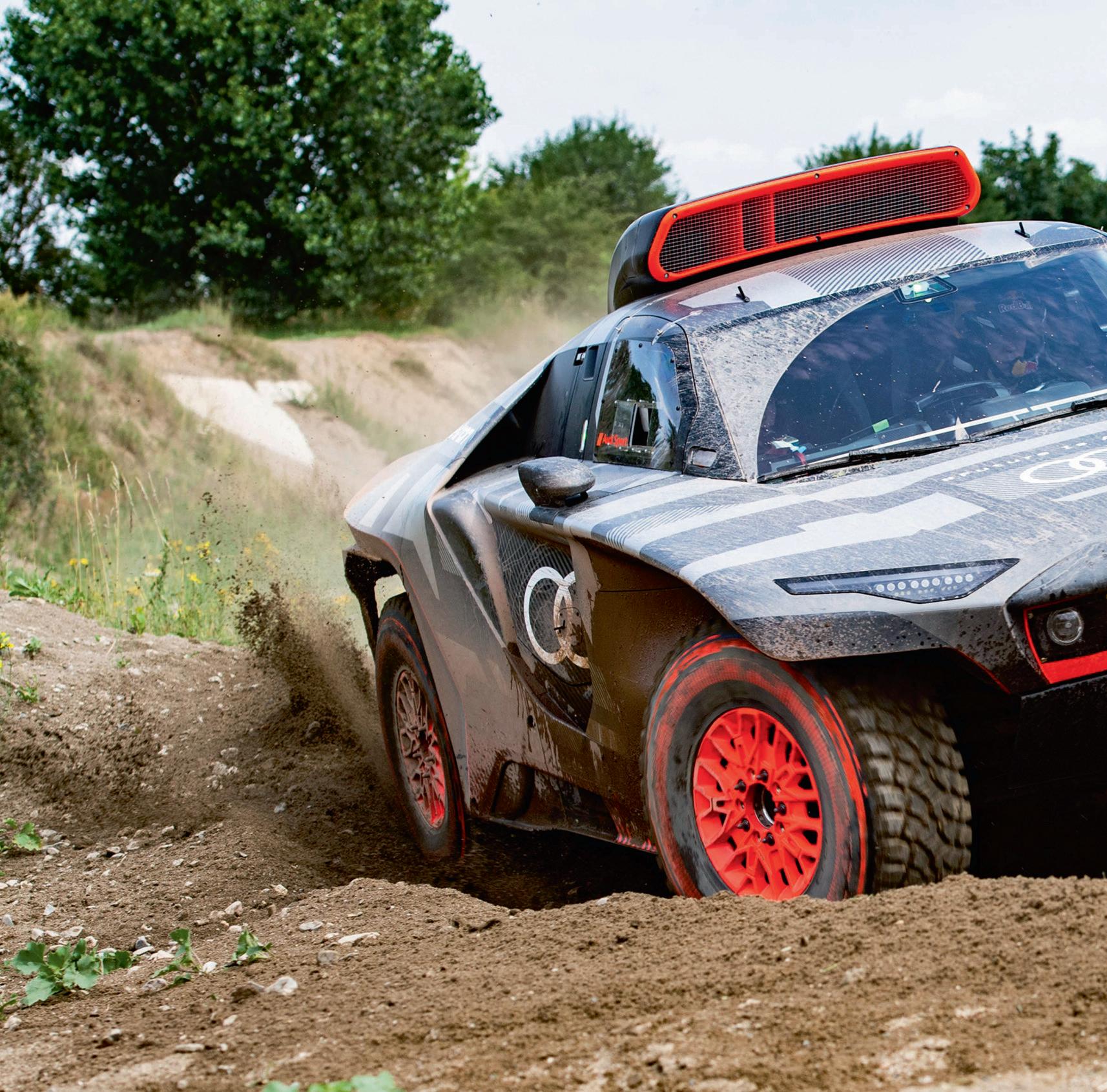

From the Renault 4 of Claude and Bernard Marreau to the Rolls-Royce Corniche hybrid of Thierry de Montcorgé, the Dakar Rally has seen no end of unique looking vehicles. There was a twin-engined Citroen 2CV, too, as well as a J70 Toyota Landcruiser converted into a functioning chip van.
Following his Rolls-Royce adventure, the aristocratic de Montcorgé returned for another pop at the Dakar the following year in a similarly eye-catching six wheeler. Called the Jules Proto, this was going well until its chassis broke.
It’s safe to say that with the extraordinary looking new RS Q e-tron, Audi is not looking to become another footnote in the annals of Dakar weirdness. If there’s an iconic one-off from the past the company is seeking to emulate, think instead of the high-riding Porsche 911 prototype in which René Metge won the event in 1984.
The electric RS Q e-tron has already had an extraordinary story. It was conceived less than a
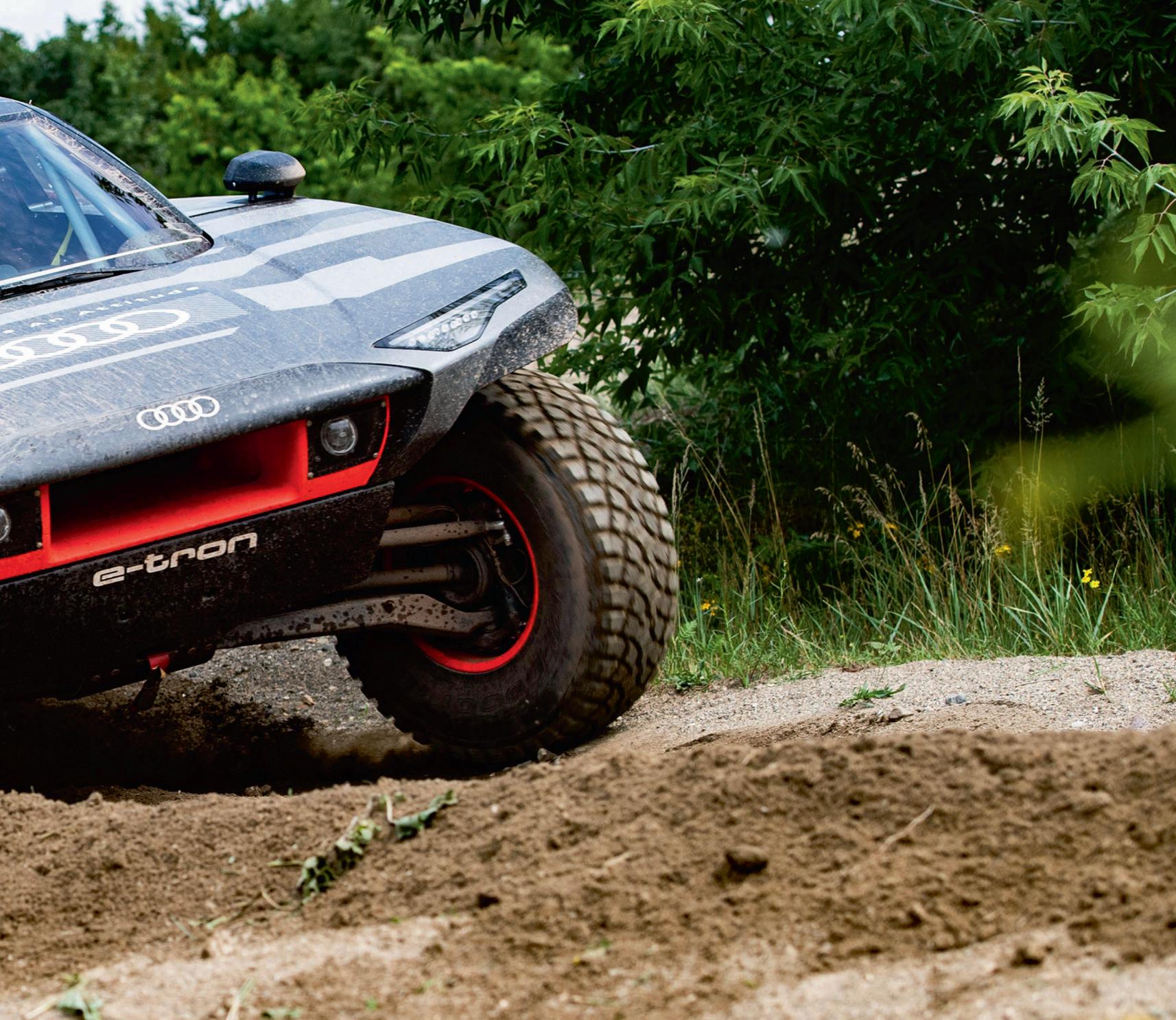
year ago and developed during lockdown to suit a set of regulations for alternatively fuelled vehicles which were still in the process of being fi nalised. Yet from a blank sheet of paper, just 18 months will have passed when the vehicle appears on the ramp in Ha’il, Saudi Arabia, ready to start the 2022 Dakar.
In some ways, the RS Q e-tron resembles a conventional cross-country endurance racer. Its carbon fi bre body panels are hung on a tubular spaceframe platform, as are all-independent front and rear wishbones controlled by remote-reservoir coil-over shocks. But its power comes from a pioneering source.
To participate in the Dakar using electric propulsion means facing one obvious challenge. ’There are no charging opportunities in the desert,’ as Audi points out. There’s no shortage of intense sunshine in Saudi Arabia’s feared Empty Quarter, but glib notions of solar panels can be cast aside. Special stages on the Dakar can cover distances




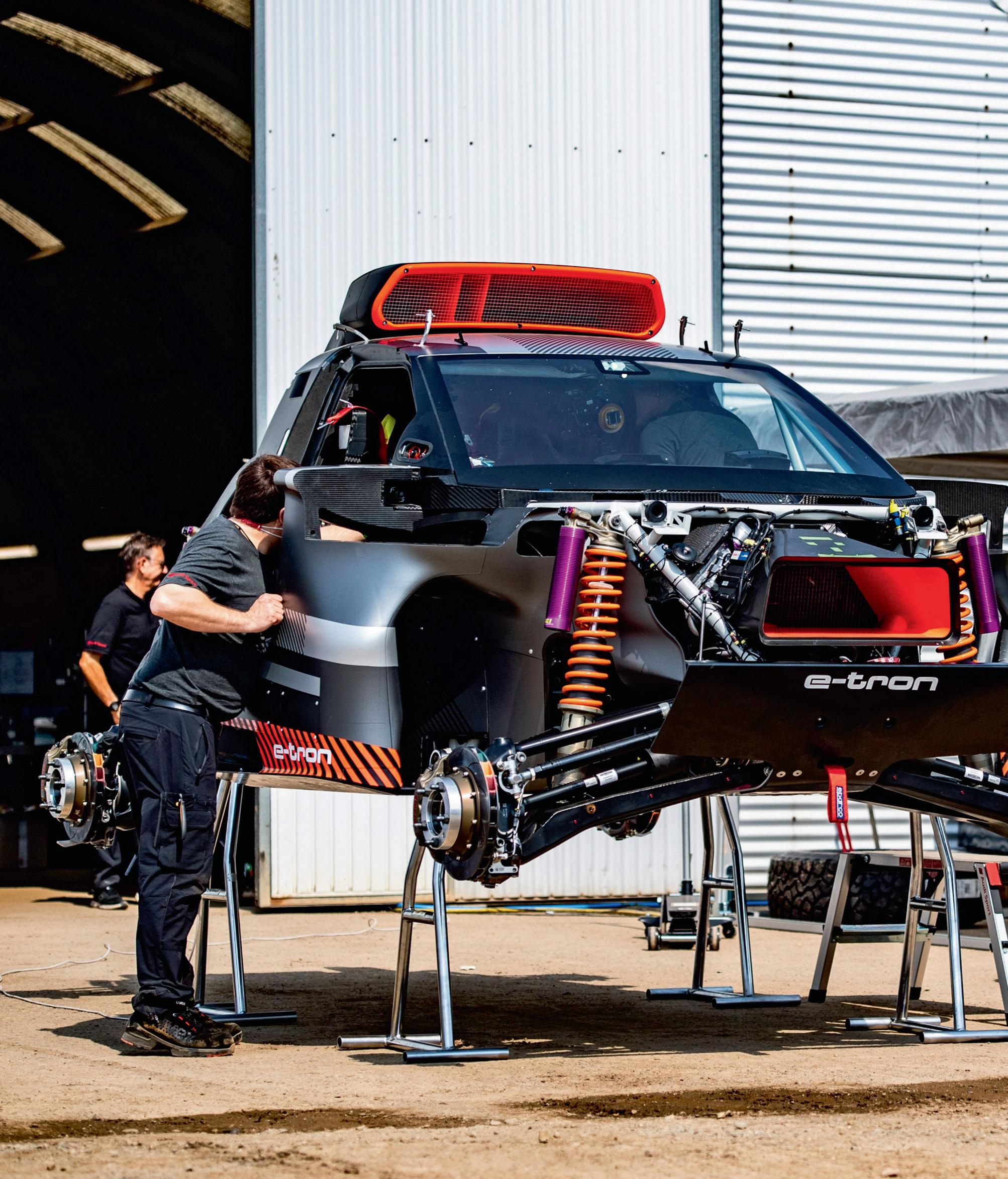




of up to 500 miles – and vehicles have to be entirely self-suffi cient the whole way. Now, that’s what you call range anxiety…
To get over this seemingly insurmountable hurdle, Audi developed a system using a petrol generator. Safe to say this is not the kind you hear chugging away behind countless show stands around the country all summer long, though. In fact, it’s a 2.0 TFSI four-pot which, in Audi’s all-conquering RS5 DTM car, used to put out something like 610bhp.
Running in the most effi cient part of its rev range, between 4500 and 6000rpm, the engine drives a motor-generator unit (MGU) similar to the one used in Audi’s current e-tron FE07 Formula E car. This in turn charges a high-voltage battery with a capacity of around 50kWh, aided when possible by energy harvested from the wheels under braking.
‘As engineers, we basically see development potential in every component,’ says Stefan Dreyer, Audi Sport’s Head of Development for motorsport projects. ‘But in terms of the drivetrain system, we have already achieved a system effi ciency of over 97% in Formula E. There’s not much more room for improvement.
‘The situation is quite different with the battery and energy management. This is where the greatest development potential lies in electromobility in general.’
Mounted between the axles in traditional race car style, the engine and 370kg battery pack are cooled by air from massive scoops behind the headlamps and on top of the roof. The battery supplies energy to the actual drivetrain – which features two more MGUs, identical to the fi rst, with one at each axle.
What this will translate into in terms of output is yet to become clear. Audi says that the system can produce up to 670bhp – but that the Dakar’s organisers are yet to fi nalise any limits which may be set.
Nonetheless, the electric drivetrain offers many benefi ts compared to a tradition set-up. In addition to energy recuperation, the motors at each end can be controlled with great precision – allowing the car to be set up for optimum drivability.
Typically of electric vehicles, too, the RS Q e-tron only has one forward gear – and the only connection between the axles is by wire. Torque



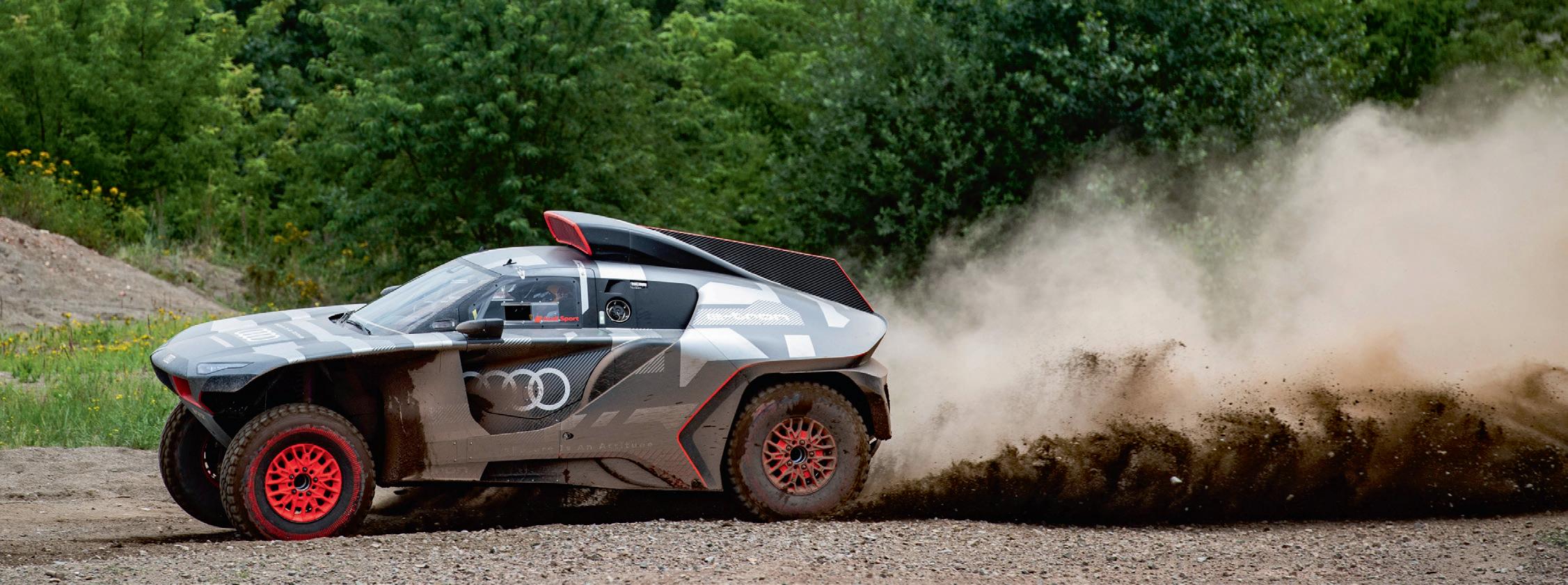
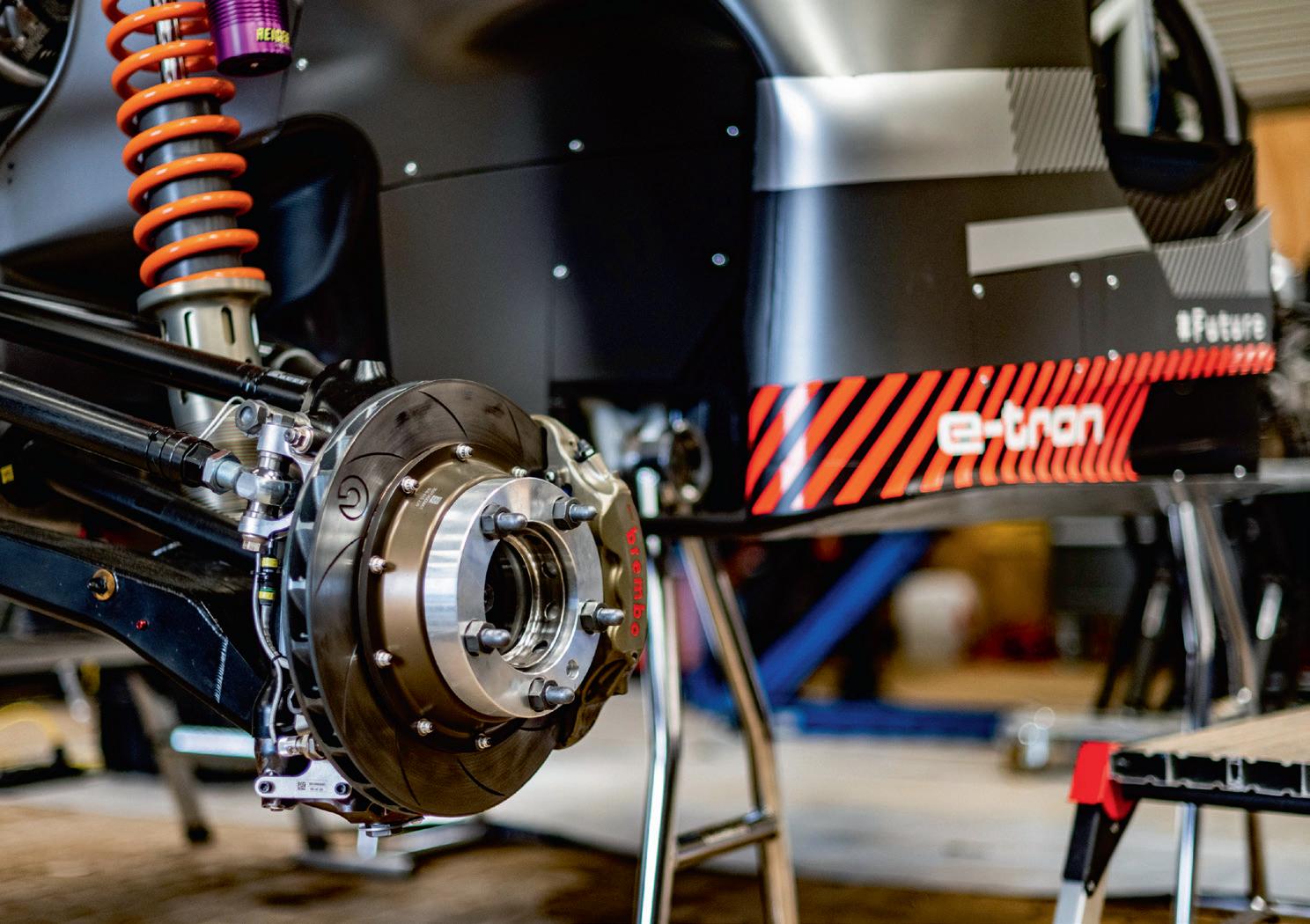



Julius Seebach, Managing Director, Audi Sport GmbH
distribution is left entirely to Audi’s software, thus creating what the company describes as ‘a virtual and freely confi gurable centre differential.’ While the battery pack is heavy, the vehicle’s engineers were able to do away with the weight of a traditional transfer case, centre diff and propshafts. No small matter, either, these could also then be factored out of the packaging puzzle that’s at the heart of every car’s design process.
Removing challenges in one area normally means creating more elsewhere, and sure enough the RS Q e-tron’s design has not been an easy one to carry off. ‘Audi has always chosen new and bold paths in racing, says Sven Quandt, team principal of partner outfi t Q Motorsport. ‘But I think this is one of the most complex cars that I have ever seen.
‘The electric drivetrain means that a lot of different systems have to communicate with each other. Besides reliability, which is paramount in the Dakar Rally, that’s our biggest challenge in the coming months.’
These months, between now and the end of the year, will be spent conducting an intensive test programme. Audi will also shake the vehicle down at various cross-country rallies during the second half of 2021 in a bid to have the car ready for the Dakar in January.
Quandt comments that in terms of its visionary spirit, the project is a similar undertaking to the fi rst moon landing. ‘Back then, the engineers didn’t really know what was coming. It’s similar with us. If we fi nish the fi rst Dakar event, that’s already a success.’
‘Less than twelve months have passed since the project offi cially started,’ adds Audi Sport’s Dakar team leader Andreas Roos. ‘We had to begin the development while the regulations for alternatively powered vehicles had not even been fi nalised. And all of the development took place during the Corona pandemic. You mustn’t underestimate that either.
‘What we are trying to do has never been done before. This is the ultimate challenge for an electric drivetrain.’
